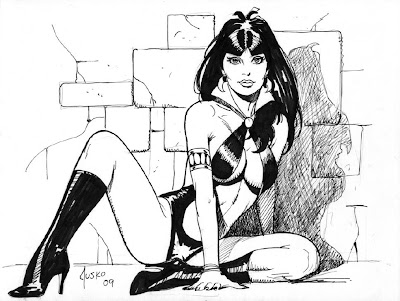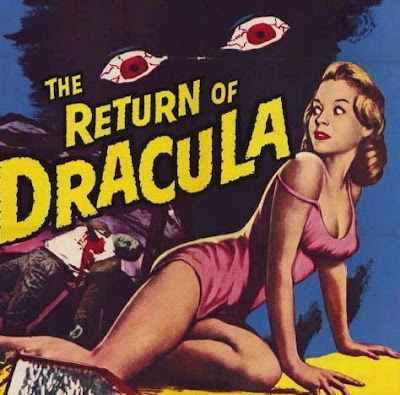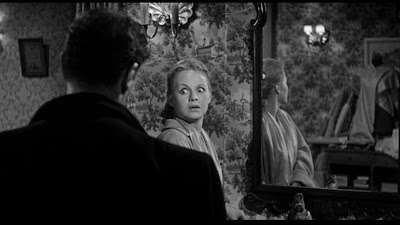The Gorilla (1939)
Starring: The Ritz Brothers, Lionel Atwill, Anita Louise, Bela Lugosi, Patsy Kelly, and Edward Norris
Director: Alan Dwan
Rating: Four of Ten Stars
When millionaire Walter Stevens (Atwill) receives a death threat from a vicious murderer and extortionist known as The Gorilla on the very eve his beautiful niece Norma (Louise) and her boyfriend (Norris) are returning to the States, he hires a trio of private detectives (The Ritz Brothers) to protect him and his family. Unfortunately, these detectives couldn't find their way around a well-lit, empty room, so things get hairy when The Gorilla strikes. They get even hairier when a REAL gorilla invades the house.

When I first put this movie in my DVD player, the opening credits took me by surprise. These days, it is being marketed as a Bela Lugosi movie (in so far as it was included in a ten-movie pack of Lugosi films), but when it was first released, the star attraction was a comedy team known as the Ritz Brothers and it was a vehicle first and foremost for them.
As a comedy, "The Gorilla" doesn't quite work, and it works even less as an intended showcase for the Ritz Brothers. Their "stupid detectives" schtick quickly becomes more annoying than funny, and the funniest bits are actualy performed by Patsy Kelly (the household's maid who wants nothing more than to quit) and Bela Lugosi as a creepy butler who seems to have the power to appear and dissapear at will. (This seems to be a minor theme in Lugosi flicks, as he plays a character with a similar talent in "Black Dragons"). It works when played for laughs, like it is here, but it is incredibly annoying when it is featured in a serious drama, like the awful "Black Dragons" was intended as.
As a mystery, the film is somewhat more entertaining. If one can tolerate the antics of the Ritz Brothers, there's actually a clever little story with some neat twists and turns and a Big Reveal that is actually somewhat surprising. (The fact that the gorilla suit featured is better than aveage also helps.)
Of primary interest, I think, is the fact that this film has ended up as an exhibit of the fleeting nature of fame. As mentioned above, I was a bit surprised when I learned this film was a vehicle for a comedy team I'd never even heard of. I did some research, and it seems that the Ritz Brothers may have bene more popular than the Marx Brothers at one time...yet the former are totally forgotten. Similarly, Lugosi and Atwill were big names in their day, but they too have sunken into obsurity. (Hardcore horror fans know Lugosi because he did "Dracula", but Atwill? Only real film geeks have even the slightest inkling about the full output of either actor. Yet, in the 30s and 40s, their names were major draws.)
"The Gorilla" is also worth watching because viewers will once again see that Lugosi was a far better comedic actor than he has ever been given credit for. His part is small here, but he shows perfect comedic timing in every scene he's in. It really is too bad that his career track was such that he didn't get to make more comedies.
In final analysis, howevery, "The Gorilla" is really only of interest to the biggest movie geeks among us... and possibly the truly hardcore fans of Bela Lugosi's work. The rest can safely pass this one by; it's not particularly bad, but it's also not very noteworthy.
(As for the Ritz Brothers, it seems their Main Funny was to be found in musical routines... of which they do none in "The Gorilla". Maybe this film is a case of the wrong vehicle for a particular group of performers. If the Ritz Brothers really were any good, it's a shame their movie legacy doesn't reflect that. This was just one or two films they starred in.)





















%20(Yasujir%C3%B4%20Ozu,%201957).jpg)






.jpg)
